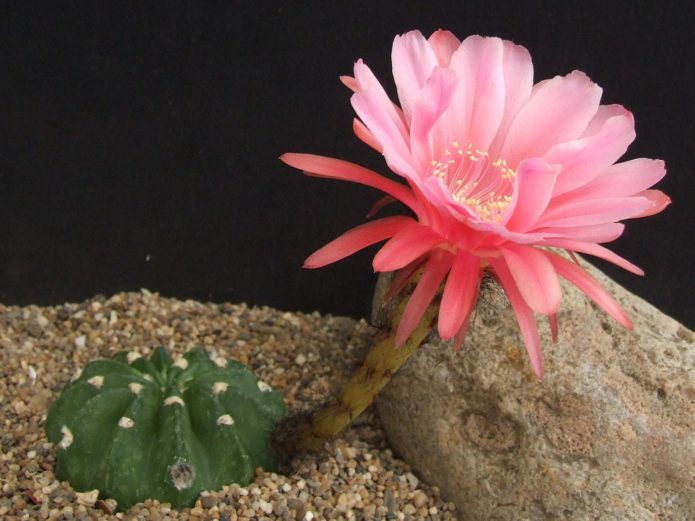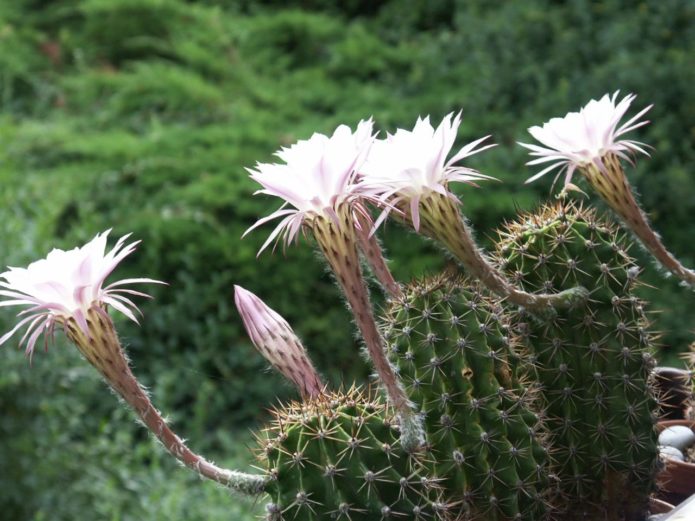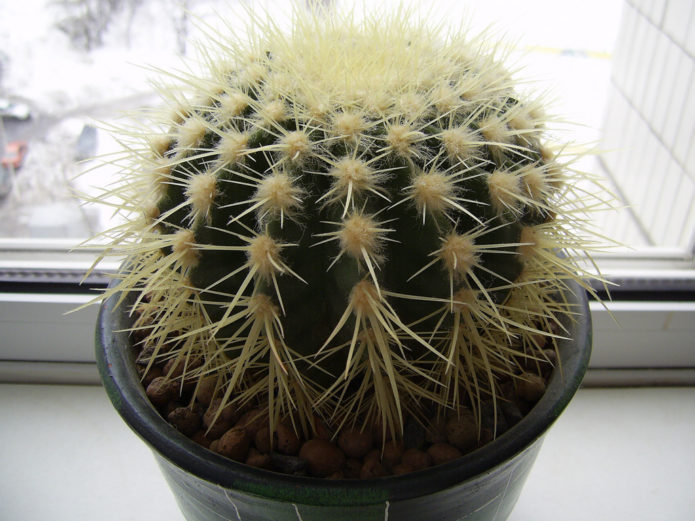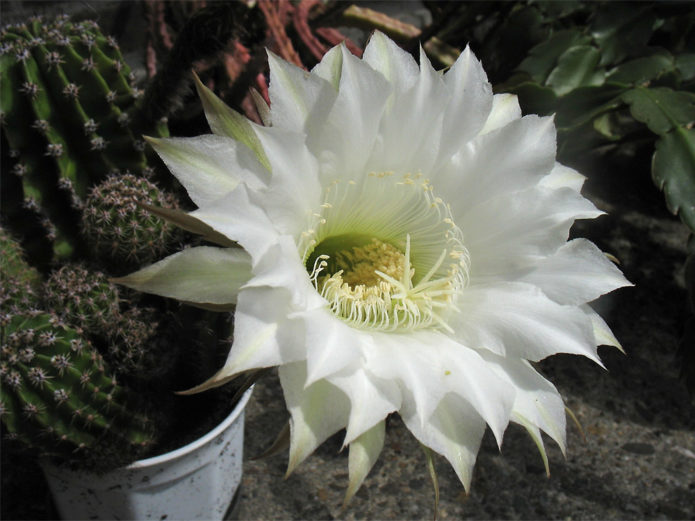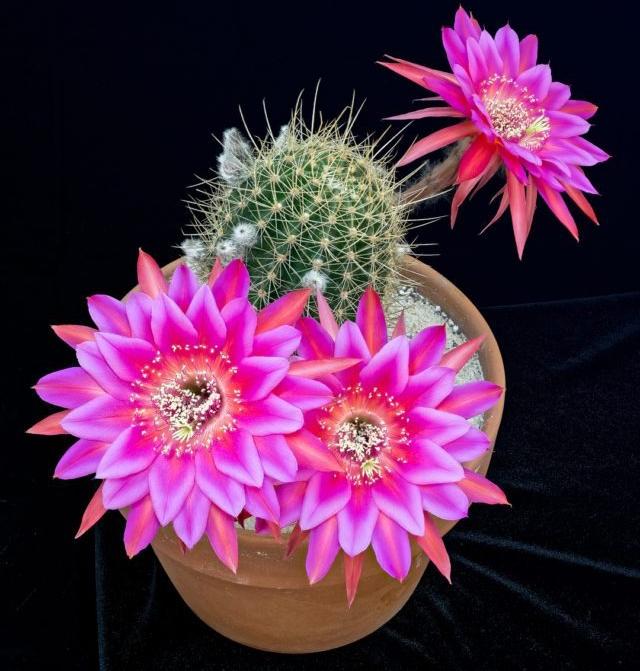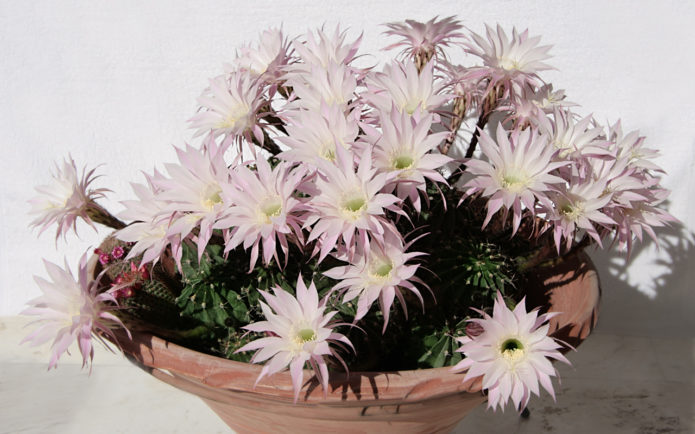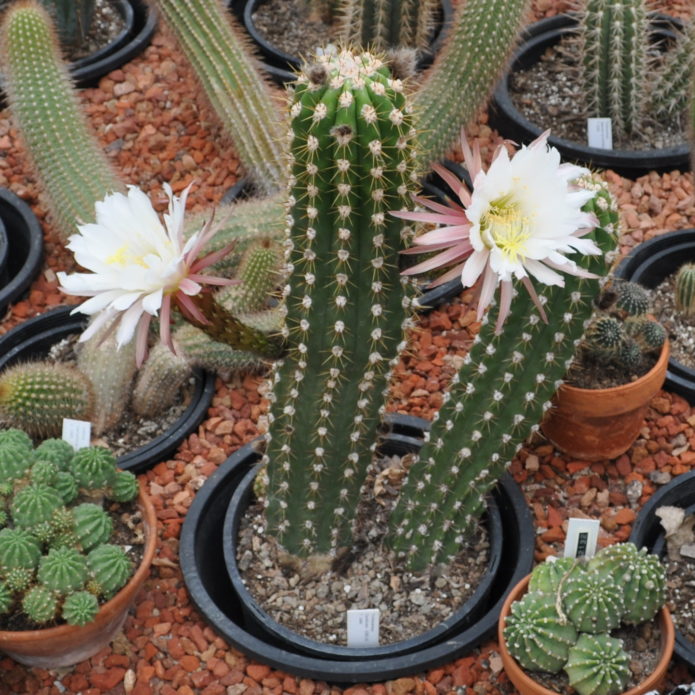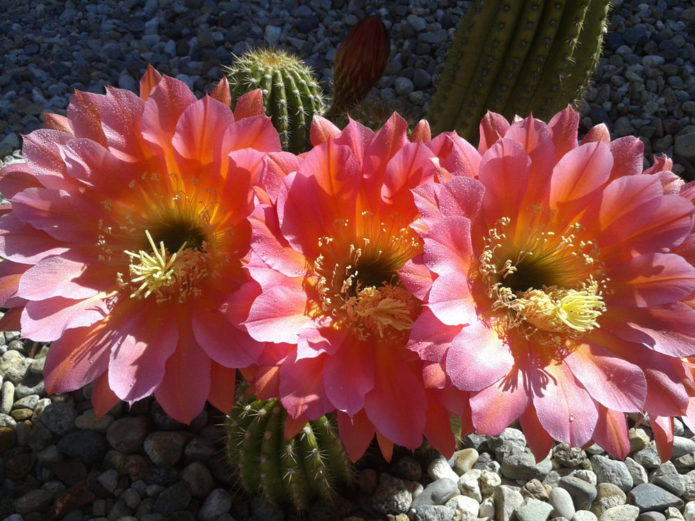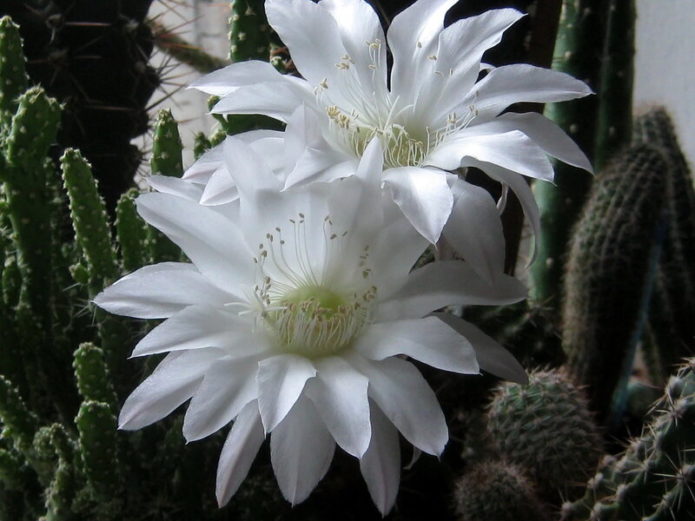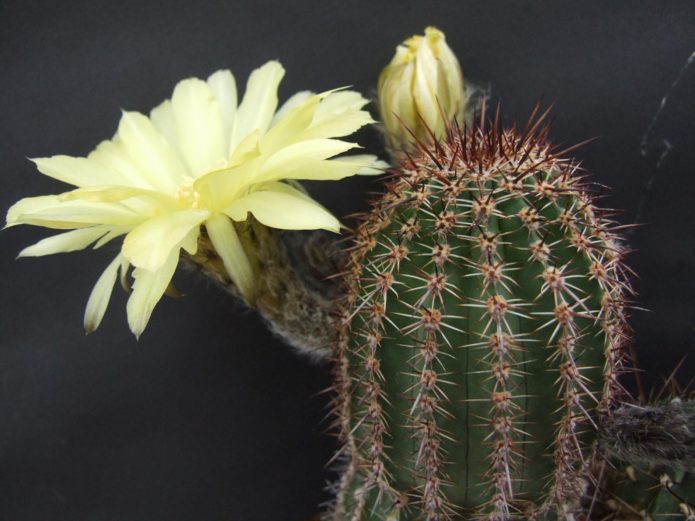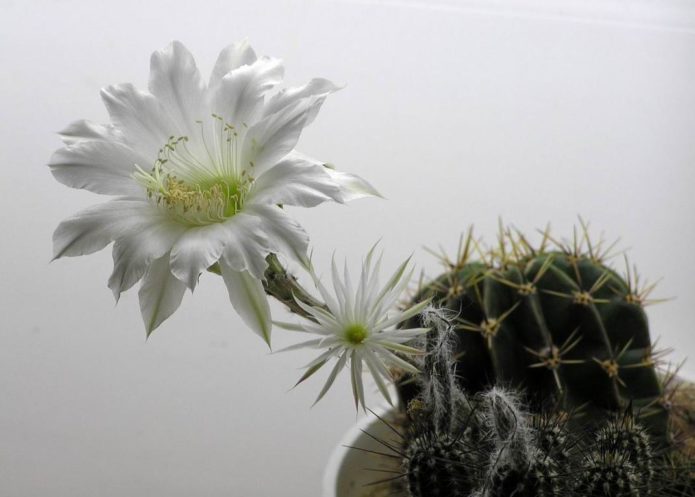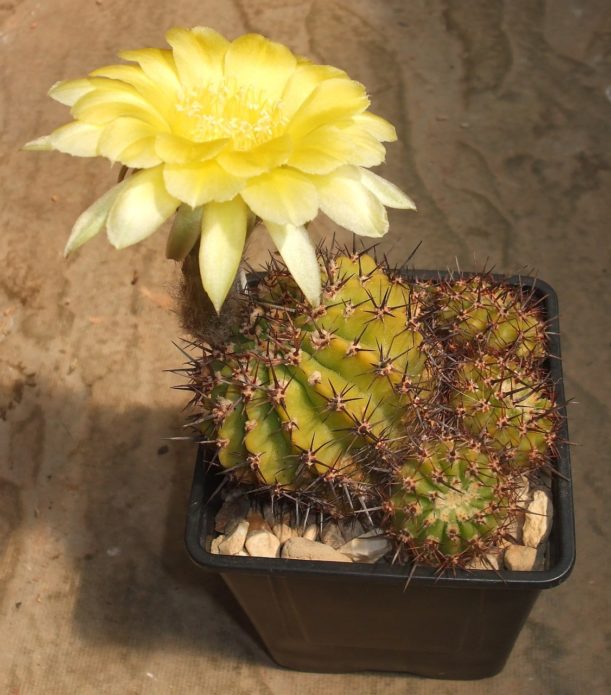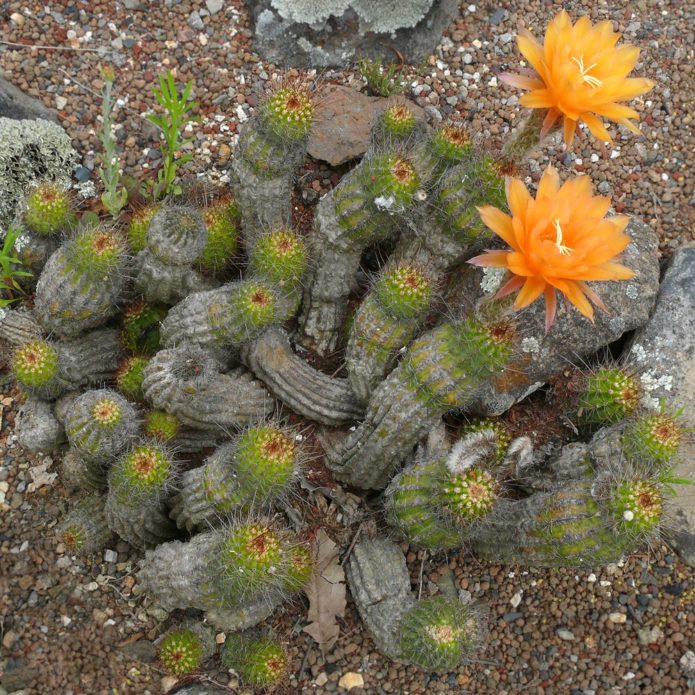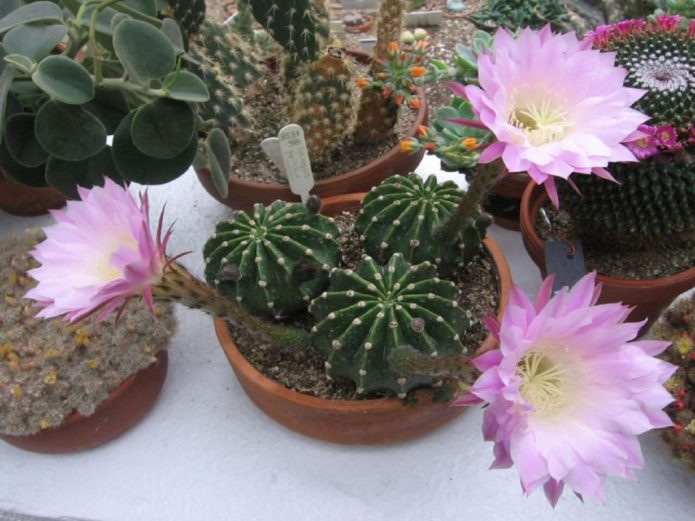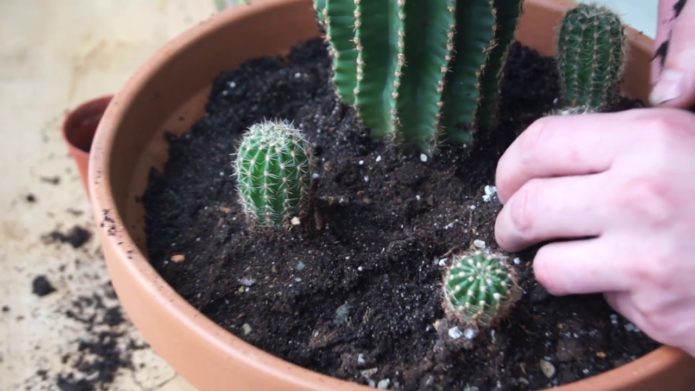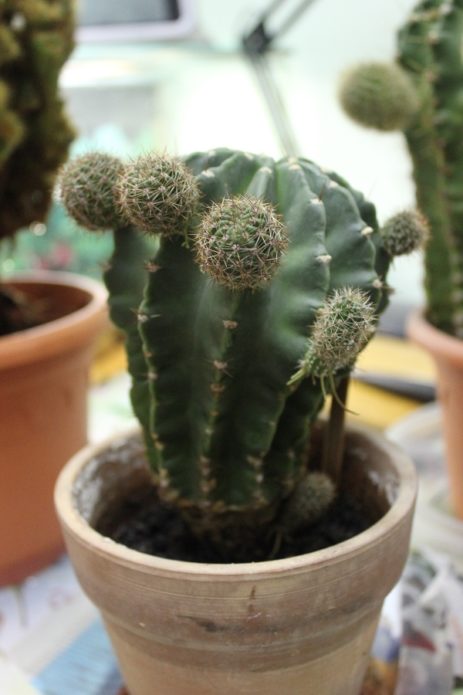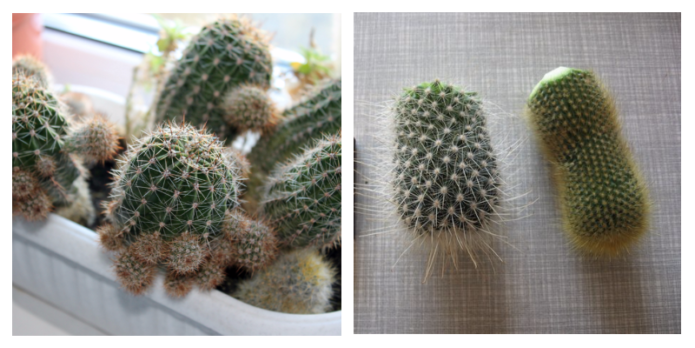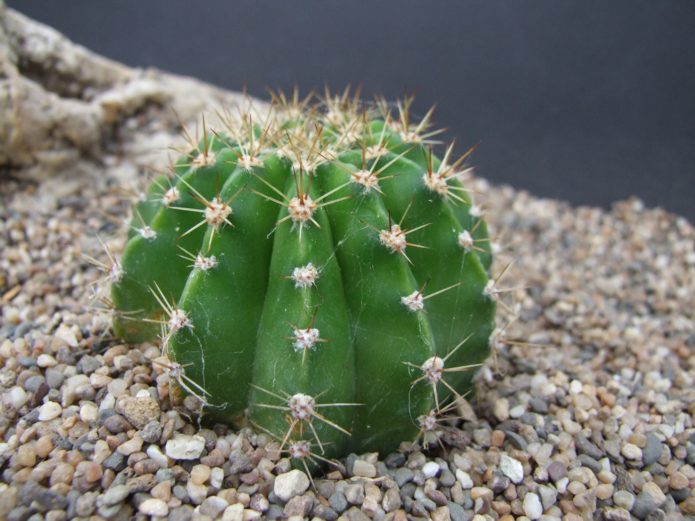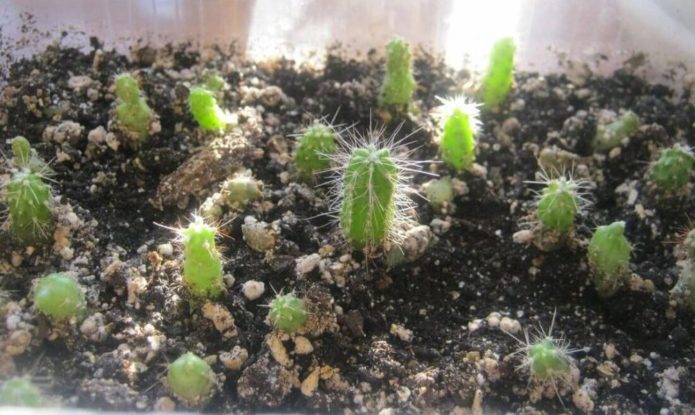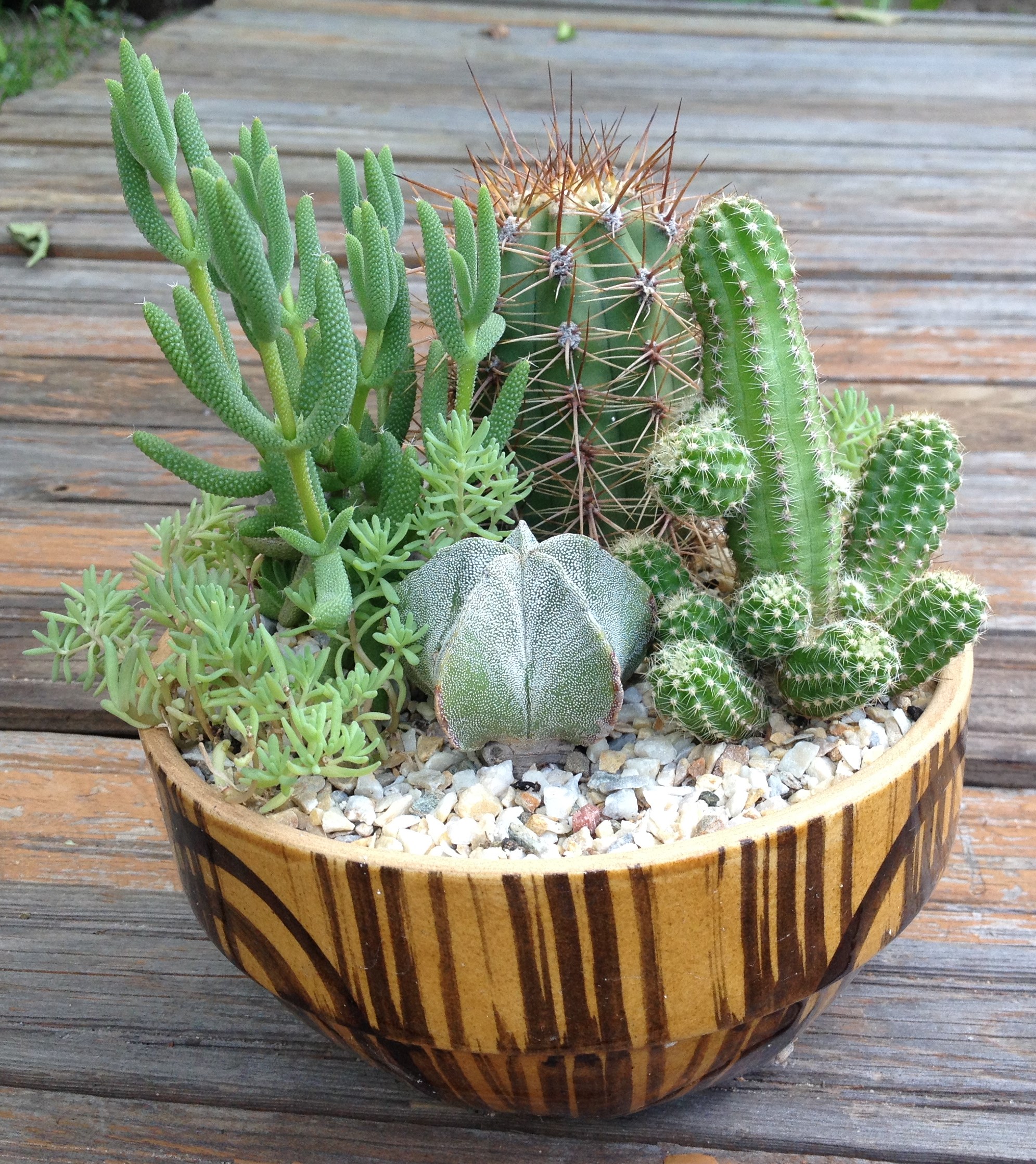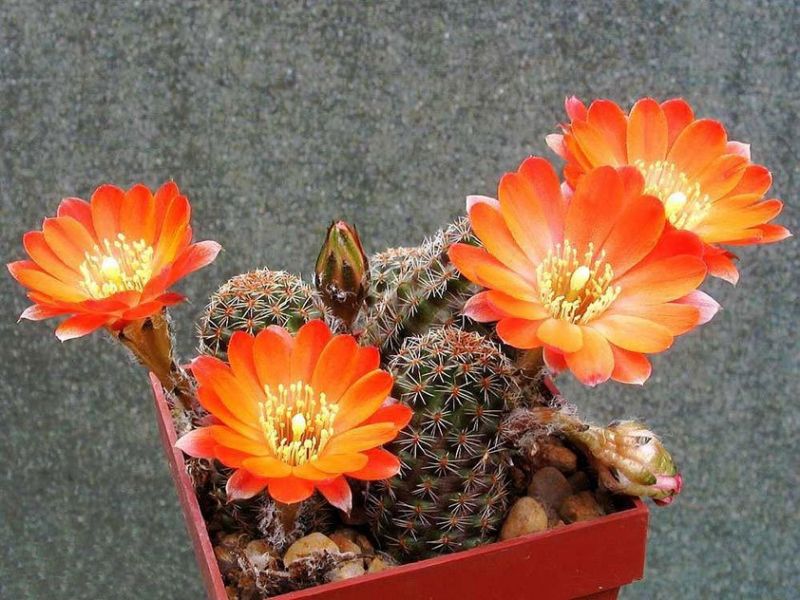Succulents have taken a firm place in flower pots and the hearts of amateur flower growers. And all thanks to their inimitable appearance and unpretentiousness. After all, taking care of a cactus is easy if you know the features of a particular species and the rules for its maintenance. A guide to echinopsis - the most popular thorns on the planet - will help you get acquainted with the recommendations for growing.
Content
What is this cactus
All young Echinopsis resemble a spherical hedgehog. They even borrowed their name from this animal. There are many subspecies, but they all belong to the Cactus family and have unique traits.
Echinopsis is characterized by a roundish physique at the initial stage of growth. Also, deep ribs are visible on the body of the plant. Spines are located along the grooves, the number of which varies depending on the subspecies.
The rind is often green, smooth and shiny. The plant clings to the soil with strong roots located close to the soil surface.
Types of echinopsis, description and photo
Despite the numerical group of species, all cacti of the genus Echinopsis are unique. They differ in appearance and “way of life”.
Subdenudata
A spherical cactus, the stem of which is divided into 12 distinct ribs. There are practically no thorns on it. The pile that performs their role is collected in dense soft bunches, rarely planted on a spherical trunk.
Sharpened, or Oksigona
It has a succulent round stem with deep furrows. Sharp and bumpy edges are covered with light areoles with tufts of pile. The ball reaches a quarter of a meter in diameter, and its height often does not exceed 30 cm.
Gruzoni
Echinocactus is native to Mexico. Spherical, with clear edges, gathering at the top into a dense wreath. Areoles are crowned with dense, strong yellow spines. Because of this color, the cactus received the popular name "Golden barrel".
Erje
The stem of the plant does not differ from the structure of its fellows. The color is dark green, saturated. The highlight of the species is a huge snow-white flower with a pinkish frame.
Eirieza
A spherical cactus with a large number of faces. The spines are soft awls gathered in bunches. As it grows, the stem branches into shoots. The flower is located on a long stem, the height of which exceeds the length of the cactus itself.
Mamylose
A compact and elegant succulent that is valued not only for its flower, but also for its neat shape. The view is round with a slightly depressed top. The color is classic green, the spines are neat, collected in short bouquets.
Tubiflora
Popularly referred to as the tube-flowering cactus. A spherical sprout with light spines. The tips of the thorns are dark-colored.It blooms in neat small inflorescences with sharp petals.
Candicans
This cactus is often referred to as whitening. Its form is significantly different from the usual Echinopsis. Oblong stems are collected in bunches and directed upwards. The stems are crowned with low blunt ribs completely covered with whitish spines. Grows mainly in shrubs.
Hybrid
This type of cactus resembles a fluffy ball in the first year of life. Later the barrel is lengthened. It blooms frequently and profusely, but almost never releases children. Possesses a hybrid of a wide variety of shades of flowers and a characteristic double petal.
White-flowered
An elongated gray-green cactus with weak ribs. The spines are brown. The species blooms with white and pinkish buds with multiple tiers of petals. We love growers for large inflorescences and bright aroma.
Oxygon
A sharp-edged cactus whose shape resembles an inverted pear. The ribs are pronounced, the number of needles is small. The species is characterized by a dark rich color and persistent aroma. The species prefers to bloom at night, reaching the peak of its fragrance closer to morning. Flowers live for about three days, after which they wither.
Hook-nosed
Globular mini cactus with 20 ribs. Light brown spines are directed in different directions. The flower is often larger than the succulent itself.
Golden
A classic cactus with a flattened top. The species is characterized by small size and distinct sharp spines. It blooms with many buds, and also throws out shoots.
Huasha
Succulent grows as a shrub, releasing new shoots at the rhizome. In the wild, it lives in huge groups, creating thickets up to one meter high. Flowers of various shades. Yellow and orange specimens are popular.
Home care
Like any other plant, a cactus requires compliance with certain rules of care. It is not difficult to contain this flower. But in order for it to please the eye with a beautiful view, it is important to take into account all its "requirements".
Where to put the pot
Echinopsis is a plant native to warm regions. Cacti from South America love warmth, sun and dry soil. The ideal growing area is with south-facing windows.
This is the most favorable environment, but it is impossible to abruptly move a "shadow" cactus to the windowsill. If the plant is used to a dark corner, move it gradually. Otherwise, the stem may be burned.
In winter, cacti go into a dormant period. This means that they should not be watered at all, and the ambient temperature should not rise above + 10 ° C.
Cactus has no particular preferences regarding air humidity. It easily tolerates both dry air and humid environments.
Plant soil
In addition to the light regime, cacti need the correct soil composition. The soil should be adapted to the natural as much as possible.
The ideal substrate for Echinopsis is loose soil with good air permeability. The hydrogen reaction must be neutral.
To prepare the soil yourself, it is enough to mix turf, leafy, coarse sand and a little fine gravel. You can protect the roots from rotting by adding a little charcoal to the mixture.
How to water
Cacti don't like too wet soil. However, they are patient and will endure a one-time, abundant watering. However, it is not worth drowning the plant too often. This species is more comfortable in dry land.
In warmer months, it is recommended to irrigate the soil twice a week. Watering can be done by directing a watering can stream to the top of the cactus. It is recommended to add a little sugar to the water - Echinopsis sweet tooth. As a fertilizer, once a month, the cactus is fed with complex mineral mixtures for succulents.
Too dry substrate can provoke abundant growth of "babies". Therefore, it is recommended to keep the cactus in absolutely dry soil only in the autumn-winter period. By the way, this is the guarantee of the health of the succulent.
Diseases and pests
Echinopsis is a hardy plant. But a cactus can also get sick if you take care of it incorrectly. Succulent plant owners claim that a much greater danger to thorny plants lies not in parasites, but in improper care.
Most often, cacti suffer from spider mites and root bugs. The trunk is also affected by fungal rot and bacterial infections. The period of bud formation and flowering is especially dangerous.
To protect the plant from disease, it is important not to replant or change the place of residence of the cactus at this sensitive time. It is also important to keep the sump dry and prevent water from accumulating in it.
Transfer: description and video
A change of soil for a cactus should occur about once a year. Succulents are transplanted in the spring, changing the soil to a new one and choosing a slightly larger pot. Since the plant is able to "drink" nutrients from the substrate, the soil is completely changed.
Drainage must be placed at the bottom of the pot. Then part of the mixture is poured, the cactus is seated and sprinkled with the remaining soil. You should not trample the soil too much. It is also important to make sure that the soil does not cover the green part of the stem.
During transplantation, it is advisable to remove "children" from the cactus. They take away its juices and strength, slowing down the growth of the stem. By the way, baby cacti are suitable for subsequent reproduction.
Planting young animals
To propagate a cactus, it is enough to wait until small spherical processes appear on its stem. Having found thorns, the kids are ready to move to the pot.
Step-by-step instruction:
- Children are carefully removed from the trunk with their fingers. It makes no sense to cut them off with a knife, because the young are separated very easily.
- Then the sprouts are dried in the sun.
- The first soil for a cactus is wet sand or fine gravel. The ball spends the first two weeks in it.
- As soon as the baby clings to the soil with roots, it can be planted in a real "adult" substrate.
How to make a cactus bloom: quick ways
It happens that even the most favorable conditions are insufficient, and the cactus refuses to bloom. It is very easy to convince a prickly stubborn person.
The main condition for flowering is a cold and correct wintering. The air temperature should not rise above + 7-10 throughout the winter. During this time, watering the plant is prohibited. But the light should be enough for him. Therefore, the most comfortable place for wintering is the windowsill on the loggia. However, don't freeze the cactus. If the temperature drops below + 5 ° C, the succulent will "fall asleep" and will not bloom.
By following these simple tips, you can most likely wait for the thorny plant to bloom. Unfortunately, this process is short-lived. The flower rarely stays longer than three days.
Cacti are interesting houseplants that are easy and interesting to care for. But in order for a prickly pet to please the eye, it is important to take into account all his whims. Then the succulent will certainly delight the owner with fragrant flowering.

